The Stories Behind the Most Iconic World War II Propaganda Posters
Everyone is familiar with World War II-era propaganda posters. Often colorful, with phrases written to tug at citizens’ patriotism, they aimed to convince everyone, service members and civilians alike, to do their part for the war effort. Whether it be promoting rationing, urging women to take over factory jobs or ensuring military secrets remained away from enemy ears, they, for the most part, succeeded in their goals.
The following are the stories behind some of the conflict’s most iconic propaganda posters, with a few recruitment ones thrown into the mix (because we couldn’t leave them out).
Rosie the Riveter
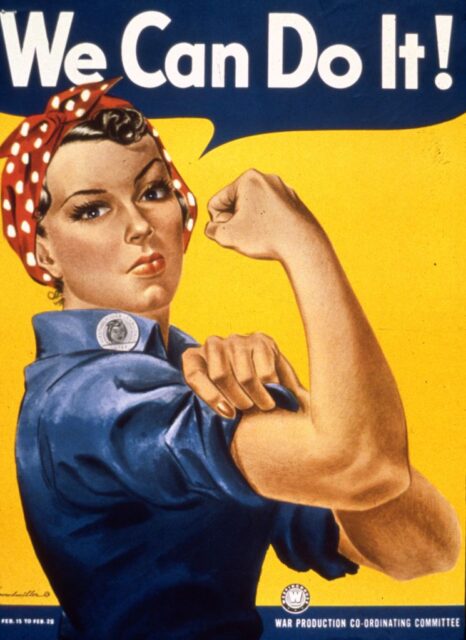
We’re starting off our list of World War II propaganda posters with the most iconic. Whether it be the “We Can Do It!” text or the famous illustration of Rosie the Riveter, this is what most people today associate the war effort on the home front with.
Rosie’s origins date back to 1942, when women were needed to take over jobs previously held by men who’d gone off to fight the war in Europe and the Pacific. She was mentioned in a song by Redd Evans and John Jacob Loeb, and later became the face of a nationwide campaign, with J. Howard Miller using his artistic skills to bring her to life.
While an incredibly popular image today, it might surprise you to learn that this particular poster didn’t achieve its current fame until the 1980s, when it was rediscovered. It was seen on occasion across wartime America, but not as frequently as some might assume.
Loose lips sink ships
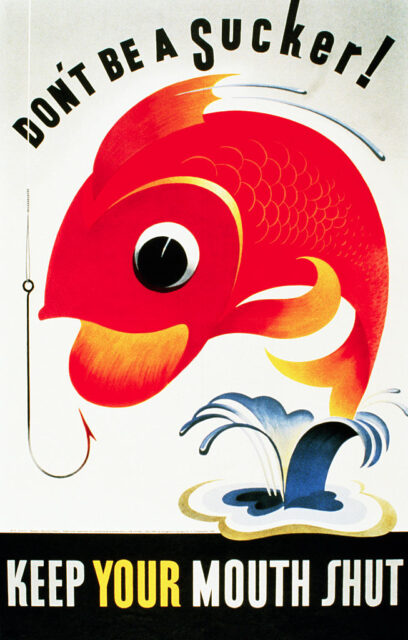
When we think of the phrase “loose lips sink ships,” an image of US Congressman Andrew May immediately comes to mind. If you’ll recall, a press conference he held during World War II informed the Japanese of an issue with their depth charges, which they subsequently rectified, resulting in the accumulated losses of 10 submarines and an estimated 800 US Navy sailors.
Printed by the US government, this propaganda poster was one of many issued throughout the conflict, warning everyone to keep sensitive information to themselves, lest it fall into enemy hands and give them the advantage.
Promoting the sale of war bonds
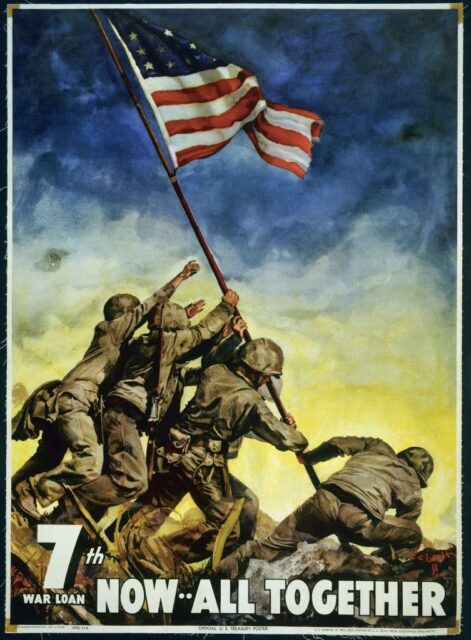
If there’s one thing that was heavily promoted during World War II, it was war bonds, and this propaganda poster is just one of many that was printed by the United States throughout the conflict. Used to help finance the cost of the years-long fighting that was taking place, they were promoted not only with posters, but through the use of celebrities, as well (among other means).
This particular poster features a recreation of Joe Rosenthal’s iconic photograph of US Marines raising the American flag on Iwo Jima’s Mount Suribachi. The campaign it promoted was launched soon after the war in Europe ended. At the time, the Japanese were still fighting the Allies in the Pacific.
Carless Talk Costs Lives
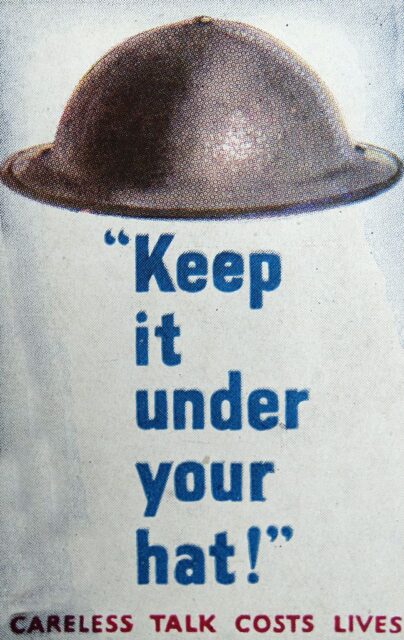
Here’s another example of a poster reminding civilians and service members alike to not discuss important topics with others. This particular one was printed by the United Kingdom, with a few variations created for posting across the country.
While there were fears of enemy spies having infiltrated the United States, the worry was even more so in Britain, given its close proximity to mainland Europe. With Germany doing all it could to win World War II, secret agents were stationed in numerous Allied countries.
Dig for Victory
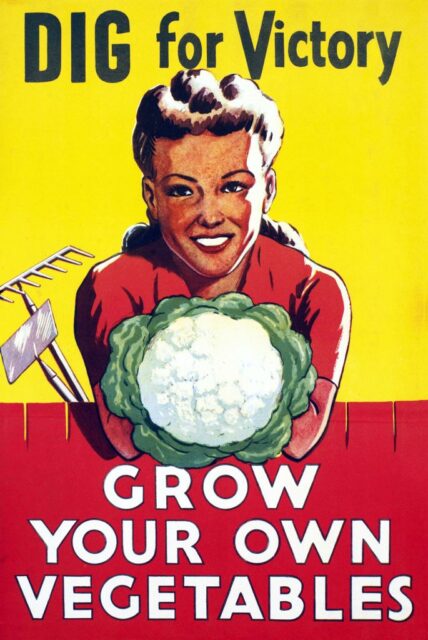
This is arguably one of the most recognizable World War II-era propaganda posters ever printed – and not just this image itself, but all of the ones designed for the Dig for Victory campaign.
Dig for Victory was an initiative that urged British civilians to plant gardens, to ensure they could keep themselves, their families and their neighbors fed. At the time, U-boat attacks along the country’s coast were preventing food imports from reaching their destinations, and it was becoming a real concern that Germany was going to starve Britain into submission. This was paired with wartime rationing.
While the main aim of Dig for Victory was to ensure the populace remained fed, it also meant that vessels could have space freed up to transport supplies that were necessary to the war effort in mainland Europe, such as weapons and ammunition.
Enlist in the US Marine Corps
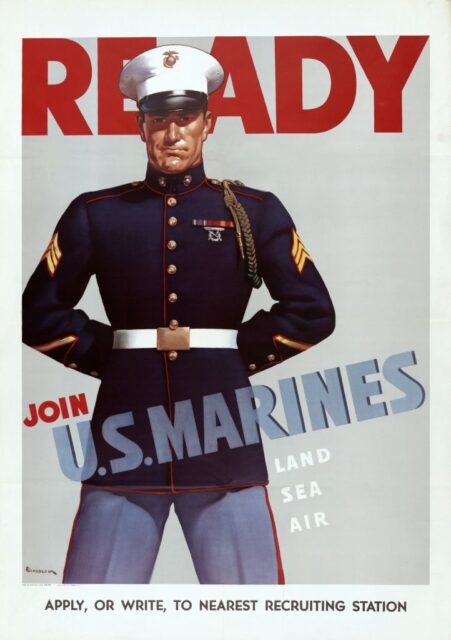
This is one of the recruitment posters we decided to include, just because of how iconic it is; when you think of posters created during the Second World War, this is likely the first one that comes to mind.
Published by Alpha Litho, Co. in Camden, New Jersey, this was one of many advertisements used to urge men of fighting age to enlist in the US military in a variety of capacities.
Enlist in the US Marine Corps Women’s Reserve
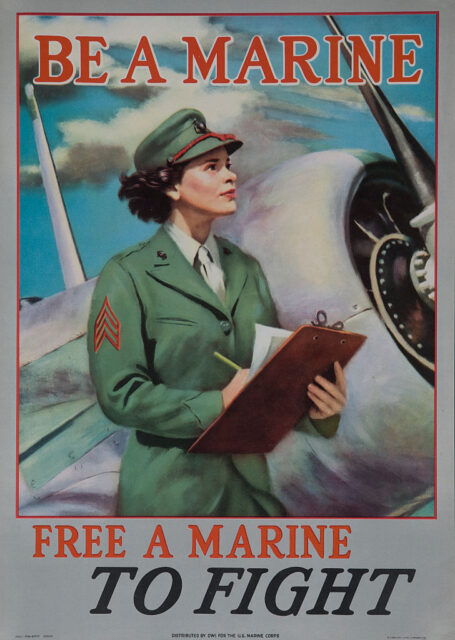
Speaking of the US Marine Corps, we couldn’t not include this World War II-era recruitment poster for the Women’s Reserve. It took much longer than other branches of the US military to launch a dedicated Women’s Reserve, due to widespread reservations over making the Marine Corps “anything but a club for white men.”
The announcement came on February 13, 1943. Over 20,000 women became “Glamarines” and Femarines,” as they were known, including Bea Arthur!
Prevent exposure to Malaria
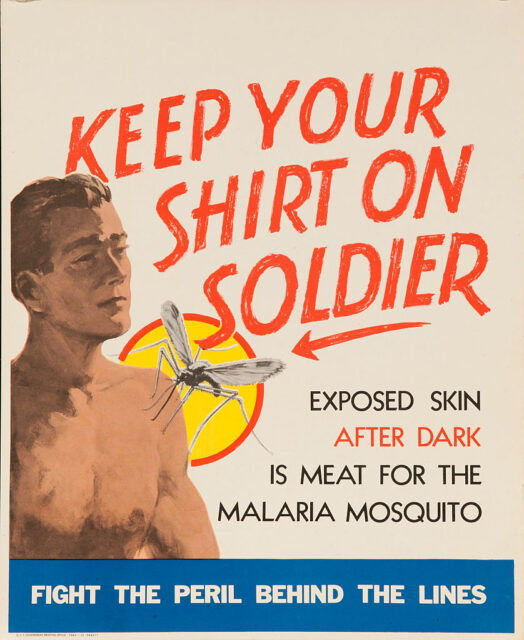
Those fighting in the Pacific didn’t have to just worry about human combatants – they had to contend with insects, as well. The hot and humid climate of this particular theater of World War II made it the perfect breeding ground for mosquitos, meaning warnings had to be made regarding the risk of various diseases spread by the winged menace, including malaria.
As if they didn’t have enough to deal with already!
Back Them Up!
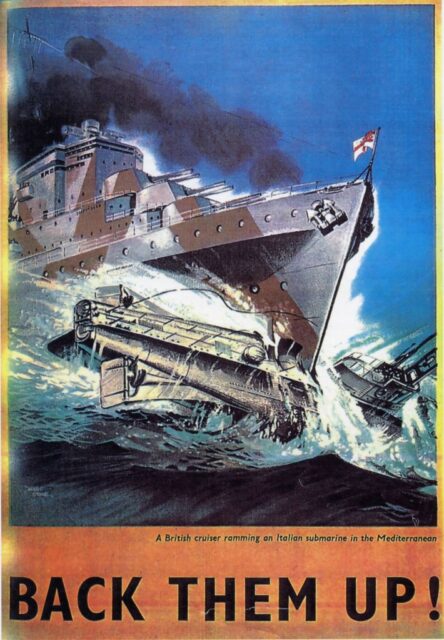
This World War II-era propaganda poster features an illustration of two vessels that took part in the conflict. Depicted is the British Royal Navy Dido-class light cruiser HMS Hermione (74) ramming into the Royal Italian Navy Adua-class submarine Tembien in the Mediterranean, resulting in the latter’s sinking.
This iconic image was painted by Marcus Stone.
Salvage for Victory
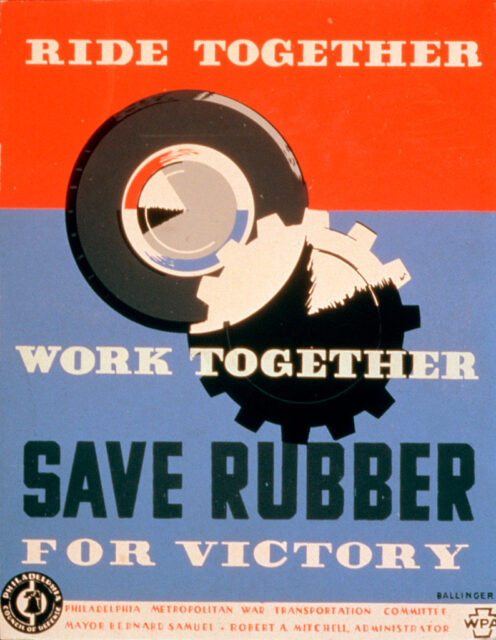
This World War II-era propaganda poster, urging the saving of rubber, was issued as part of the US government’s Salvage for Victory campaign. Throughout the conflict, those on the home front were urged to save a host of materials that could be used overseas, such as rubber and scrap metal. They weren’t delivered to troops in their raw form, however; factories used them to manufacture aircraft, weapons, and other necessary supplies and equipment!
This was one of many posters printed to promote the initiative.
Uncle Sam and his iconic ‘I want you’ posters
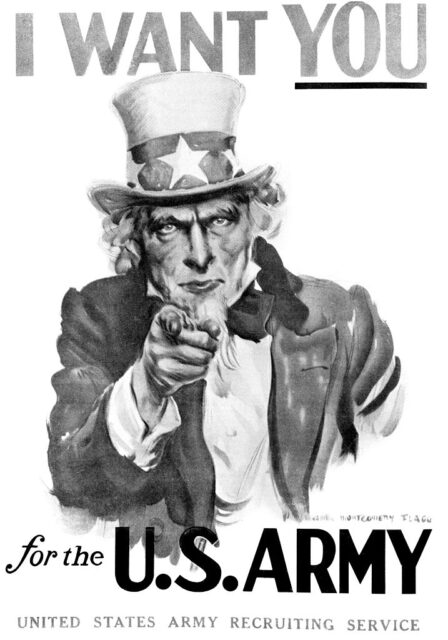
Everyone, regardless of whether they grew up in the United States or not, is familiar with this illustration of Uncle Sam and his famous “I want you” recruitment phrase. The personification of the country as a whole, the legendary figure has been used in a wide variety of recruitment campaigns, urging everyday citizens to join the US Army.
While this particular depiction of Uncle Sam originated in World War I, various iterations made appearances on posters posted across the US during the Second World War.
The Girl He Left Behind
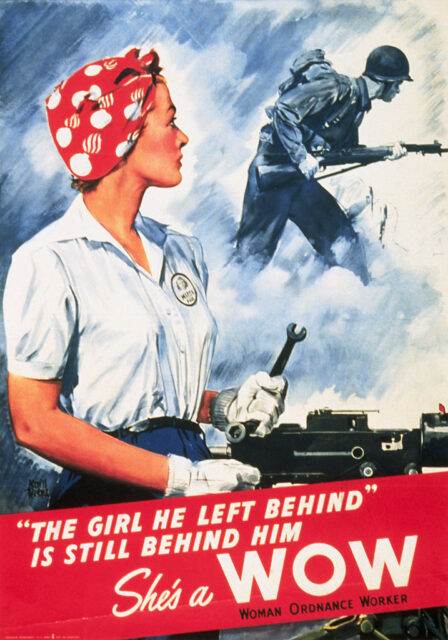
Illustrated by Adolph Treidler, this World War II-era propaganda poster urges women to take on work previously done by men, as a way of showing them that they still support them, even when they’re away from home. As aforementioned, women stepped in to work at a factories during the conflict, going on to manufacture equipment, vehicles and weapons that were sent to the frontlines.
This particular poster was commissioned by the US Army’s Department of Ordnance.
Salvage materials for the war effort
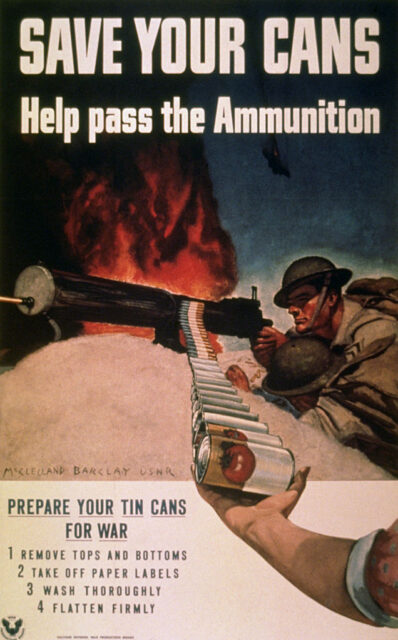
Similar to the “Save Your Rubber” poster featured earlier on our list, this World War II-era propaganda poster urges those on the home front to save any and all materials that can aid the war effort – in this case, aluminum cans. Given metal was in such short supply during the conflict, every little bit counted, even if it came from someone’s pantry.
Illustrated by McClelland Barclay, this poster cleverly substitutes machine gun ammunition with cans, to emphasize their usefulness in combat.
“Never was so much owed by so many to so few”
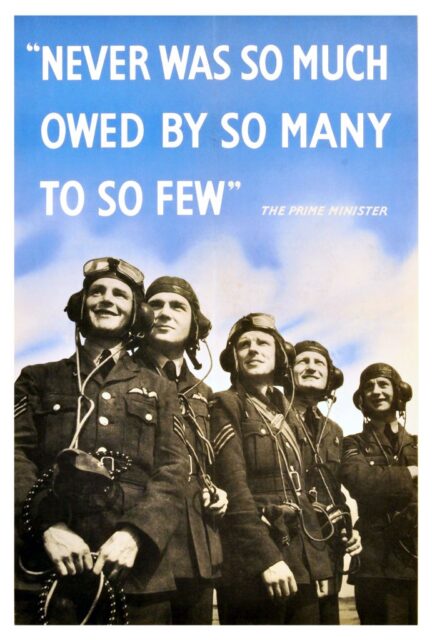
In August 1940, amid the Battle of Britain, Prime Minister Winston Churchill honored the brave airmen who’d risked their lives for the United Kingdom in a speech delivered to the House of Commons. One part of it, “Never was so much owed by so many to so few,” struck a cord and went on to make an appearance on a propaganda poster.
More from us: Mickey Rooney Received the Bronze Star for Entertaining Troops on the Frontlines
Featuring members of the Royal Air Force’s (RAF) Bomber Command, this poster not only promoted the war effort, but also prompted many to enlist and fight for their country.
The post The Stories Behind the Most Iconic World War II Propaganda Posters appeared first on warhistoryonline.
The Stories Behind the Most Iconic World War II Propaganda Posters
Philippines Truth
Post a Comment
0 Comments